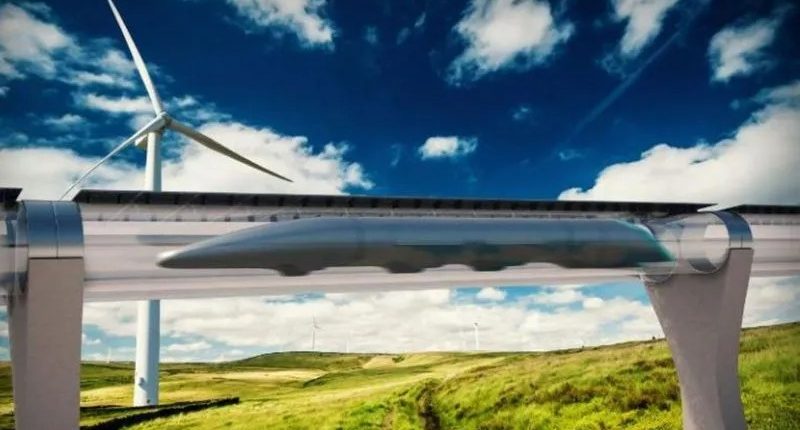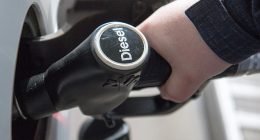THE mind-bending “train of the future” will see passengers darting across countries at a staggering 700mph while contained in a vacuum-sealed tube.
The superfast shuttle, named the Hyperloop, is made up of high-speed pods that will shoot through a tube.
Created at Hardt, the bizarre 30-metre-long white tube may soon replace the on-rail trains we’re so used to today.
Like something out of a space movie, its rocket-like appearance is striking and fascinating.
However, the Hyperloop tube offers a very possible glimpse into what may be the future of public transport.
It’s a test track for ultra-fast trains running in the vacuum.
READ MORE ON TRAINS
The Hyperloop mobility system consists of just two things – a train, and a vacuum, instead of a train, rail, and tunnels.
The super-fast train will be able to travel at a staggering speed of 700mph, with most trains in the UK only being able to reach top speeds of up to 140mph.
Instead of carriages, the Hyperloop will use pressurised pods that levitate on tracks using strong magnets.
By sucking out all the air from the tube, the pods can be propelled from one end to the other at super speeds.
Most read in Tech
Removing friction also enables pods to move with greater freedom, achieving higher speeds.
Without applying force to resist drag, less energy is required to propel the pods.
Additionally, the Hyperloop is engineered to operate entirely on electricity.
Inside the pods, travellers will be able to enjoy a more luxurious experience than they might on a standard UK underground train.
Within the futuristic pod are two advanced and cozy seats, accompanied by a display showcasing travel information.
Along the convoy’s ceiling, screens virtually simulate the northern lights, enhancing passenger comfort.
They are also cleverly used in an attempt to potentially mitigate the effects of high-speed travel-induced dizziness.
The Hyperloop’s levitating pods also eliminate the vibrations commonly associated with train travel.
The impressive train would cover over 1400km between Amsterdam and Budapest in four hours and twenty minutes.
Passengers will also be able to travel between LA and San Francisco in just 30 minutes – in a car, the journey takes over five and a half hours.
However, the concept of a vacuum tube train is not new, and it made headlines in 2016 as Tesla Motors and X CEO Elon Musk challenged student teams in the Hyperloop pod competition.
A total of 29 university teams, a high school group, and a team from Reddit were invited to build scale models of their designs to present in Hawthorne, California.
The space-age system, developed by business magnate Elon Musk, was at the time described as the “fifth mode of transport”.
The competition came after Hyperloop had its first successful test in early May 2016.
A prototype sped along a section of a track in Nevada at 116mph.
Musk had hopes that the Hyperloop would be transporting passengers by 2021, but it never came to fruition.
But now, the concept is being explored more thoroughly.
Another company building a similar machine, Zeleros, stemmed out of Musk’s competition.
Luis Navarro, the Chief Operations Officer at Zeleros, emphasized the substantial effort and wealth of expertise required to develop this technology.
“We need to be a focused aerospace company,” he said.
The concept of the mega-fast high-tech Hyperloop is only able to be turned into reality thanks to the Polish startup MagRail, however.
MagRail created the magnetic levitation system that can be used in existing railways to optimise usage.
MagRail has successfully undergone initial tests, demonstrating its ability to levitate traditional transports on existing tracks.
The company intends to continue testing its innovation, initially implementing it in ports and industrial facilities that utilise extensive railway networks for moving containers.
It’s also set to collaborate with Duisburg, Europe’s largest inland port, to optimise its operations.
According to Innovation Origins, forecasts suggest an increase in the demand for freight and passenger rail transport by 2050 – with many people hoping for drastically reduced emissions by then.
In this capacity, the Hyperloop could serve as a disruptive solution that integrates the three biggest modes of transport – cars, trains, and planes.
Primarily, it could initially focus on passenger transport, therefore freeing up current railways for freight purposes.
And while the United States initially revived the discussion around vacuum-based train concepts, interest in the technology there appears to have waned.
The Hyperloop pod competition ceased in 2019, and Virgin’s Hyperloop One shifted its focus toward freight, resulting in a 50% reduction in staff.
Additionally, HyperloopTT, a prominent US company in this field, withdrew its plans to go public.
Despite this, seven companies globally remain actively engaged in advancing this technology, with Hardt and Zeleros leading the charge in research and development.
But the Hyperloop isn’t the only futuristic train in development.
China Railway has just completed its first successful performance tests of next-generation high-speed trains that are predicted to be faster than planes.
During these performance tests, China’s latest high-speed train shot to an impressive speed of 281 mph.
They are also working on other projects, such as their CR Fuxing, which is also in a testing phase and should travel at an average speed of 260mph.
















